Sergi's Shredded Six-Pack
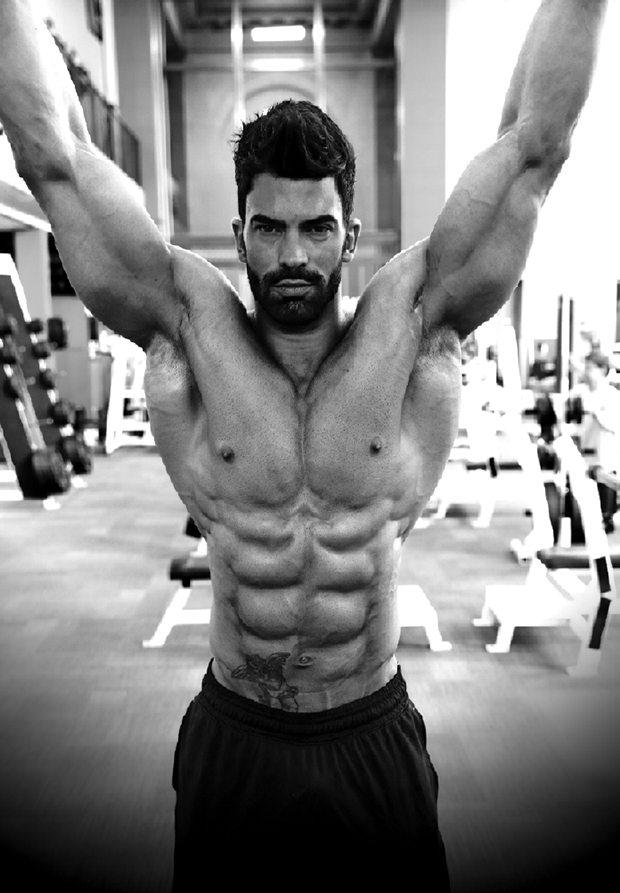
How Sergi Constance Got His Washboard Abs
It’s not uncommon in our sport for an athlete to come out of nowhere and completely dominate the stage. They emerge unknown and have a profound, lasting impact on the industry; names like Rich Gaspari, Big Ramy, and Latorya Watts come to mind. These athletes were no-names until one day, boom! They wowed us with their conditioning, or their size, or their perfect symmetry. Those three superstars are IFBB pros, however, so it’s practically their job to shock us with what they bring to the stage. But this article isn’t about a pro. It’s not even about a bodybuilder. It’s about a fitness model who’s taking the industry by storm and demonstrating that just because you don’t have a pro card, that doesn’t mean you can’t make a name for yourself. Ladies and gentlemen, meet Sergi Constance.
On his website, he has a fashion/style blog and a fit blog. He has a members-only section. He has photos, videos, workouts, and training tips. Did I mention he also has 1.6 million followers on Instagram, 48.8 thousand on Twitter, and 4.1 million on Facebook? Oh, and he’s a sponsored athlete. For a newcomer (and an amateur!), I’d say this guy knows how to navigate his way around both social media and the gym. In an industry where pretty faces and stellar physiques come a dime a dozen, something separates this 6'1" 185-pound fitness model from everyone else. This dynamo (originally from Valencia, Spain) surfaced in the fitness world recently, despite having dabbled with weights since he was 17. He used to compete as a junior bodybuilder in Spain, but it wasn’t until he competed in the men’s physique category that he found his true calling. It took eight years from him to reach the upper echelon of the fitness industry, but now that he’s here, he doesn’t show signs of slowing down. Whether it’s because he has “the golden ratio” and Vitruvian Man proportions, or because he’s got that je ne sais quoi factor, there’s no denying that Sergi Constance is a force to be reckoned with.
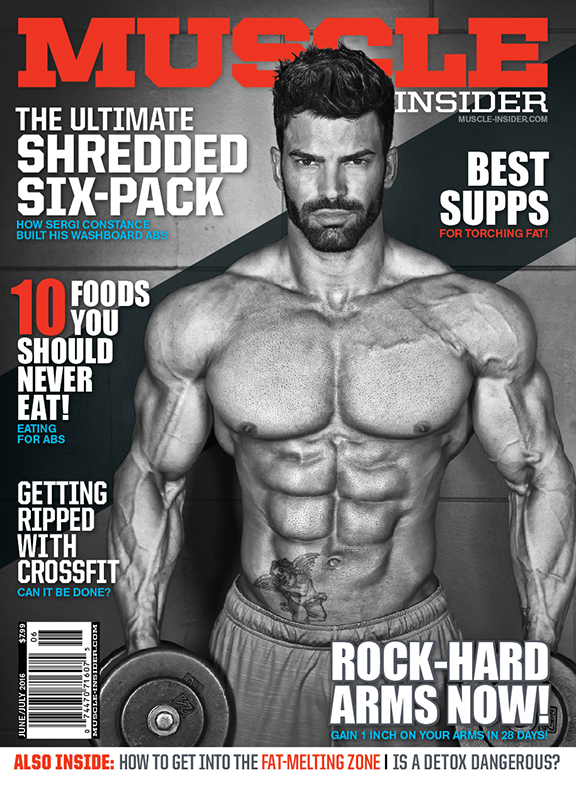
Not since Ahmad Haidar (aka “Abzilla”) have we seen an athlete with such iconic abdominal. Not until Sergi. In this article, we capture him training the body part he’s renowned for. Find out how he does it, why he does it, how often he does it, and why you should do it, too!
Sergi’s philosophy on ab training and diet: “I like to switch between exercises for the “upper” abs (exercises where I bring my upper body to my legs) and exercises for my “lower” abs (exercises where I bring my legs to my upper body). But always remember that the abs are one single body part, and the best way to make them look great is through diet. If your diet isn’t good, and you don't have a low body fat, it’s useless to work all the different angles of the abs with exercise.
I like to start my abs workout with easy movements, and then go up with the intensity, moving to harder exercises. As an example, I like to start with crunches on the floor. With this exercise, you can focus totally on the contraction, and squeeze the abs. Also, it’s an easy exercise, so you can do a high range of reps.”
1) Hanging Leg Raises

What it works: Rectus abdominis, external obliques, quadriceps, tensor fascia latae
How to do it:
1. Hang from a pull-up bar until the momentum (swinging) is gone, and let your body just go limp.
2. Flex/brace your core, lats, and quads.
3. Slowly raise your legs straight in the air so you’re making an “L” out of your body.
4. Lower your legs and repeat.
Why it works: I like to do leg raises from the floor for my “lower abs,” and to increase the intensity, I will sometimes do these types of leg raises, but hanging with my.
Here are some tips:
- Try to do the exercise slowly to control the movement and keep the balance. Don't allow your body to move, swing, or bend.
- Try to squeeze your abs at the top and do a slow negative.
- This is an advanced exercise, so try to start doing 10 quality reps, and after some weeks of training, you will be able to do 15 to 20 reps easily.
2) Side Plank with Leg Raises


What: Serratus anterior, internal and external obliques, rectus abdominis, gluteus medius, deltoid, rectus femoris
How to do it:
1. Prop your upper body up on one of your elbows and forearms.
2. Brace your core.
3. Raise your hips as high as they’ll go, and form a straight line (if you were looking at yourself aerially) with your body from your shoulder, to your hip, through your ankles.
Why it works: Like all the other body parts for the abs, one of the most important keys is to squeeze your abs hard, and feel them doing the movements—no other body part.
I do this side plank exercise for the obliques, because it helps me hit another “zone” or “angle” of my abs.
Here are some tips:
- We need to keep the balance, which is another aspect to working the core
- Beginners should try to start doing the plank for 30 seconds, and then go up with the time to 1 minute or 1 minute, 30 seconds.
- A harder exercise for side planks is if you try to keep the opposite leg separated and in air.
- I do 4 sets, and hold between 30 seconds and 1 minute.
3) Medicine Ball Twists

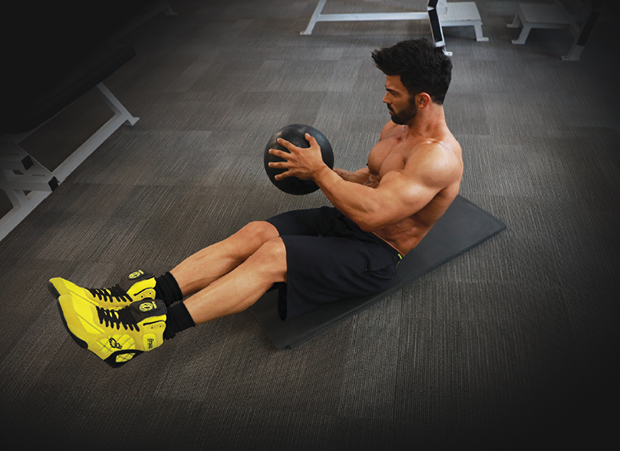
What: Internal and external obliques, erector spinae, rectus abdominis, transverse abdominis
How:
1. Sit on the floor with your knees together and feet lifted about six inches above the ground. Balance on your glutes.
2. Lean back and grab the medicine ball with both hands in front of you.
3. Twist from side to side, moving from your waist, as opposed to your shoulders. Try to touch the ball to the ground if you can.
Why: After the first couple of exercises, I like to go up with the intensity, so again, I do one exercise for the “upper abs.” This time, I try to keep a crunch by holding the legs and torso in the air, like a V, and do torso rotations with a ball. In this way, we work upper abs, lower abs and also obliques and serratus.
I usually do 3 or 4 sets of 20 to 30 rotations
4) Leg Raises on Bench

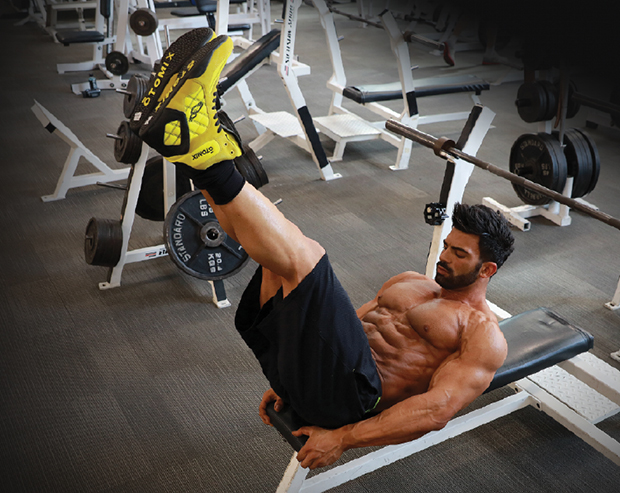
What: Rectus abdominis (mostly the lower portion), external obliques, rectus femoris, tensor fascia latae
How:
1. Place your hands by the sides of a bench. Hold tightly.
2. Keep your legs extended as straight as possible with your knees slightly bent .
3. Raise your legs as high as they can go (90 degrees to the floor would be perfect).
Why: For the second exercise, I will do it either with my legs or knees, and just raise them on the bench. Doing them supported on the bench or the floor is easier than hanging, so it will help to focus in the squeeze and contraction again.
I usually do 4 sets of 20 reps.
5) Rope Cable Crunches
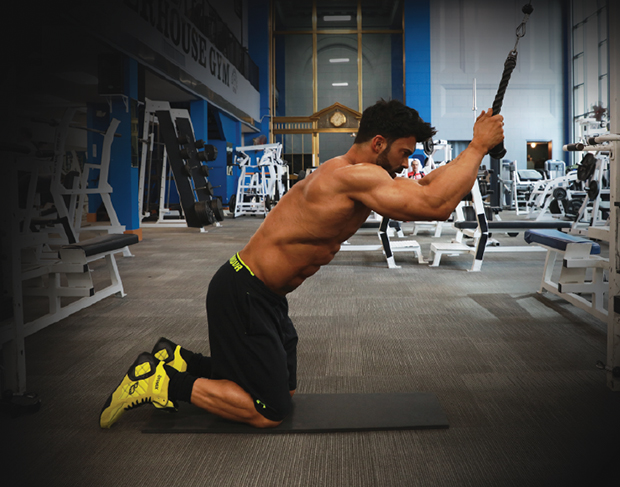

What: Rectus abdominis, external obliques, serratus anterior
How:
1. Kneel one or two feet in front of a rope cable placed at the highest setting.
2. Grab the rope with both hands overhead, making sure your torso is stretched out and upright.
3. To come down, flex at the spine, almost like you’re bringing your elbows to your legs as you crunch the cable down.
4. Pause at the bottom, and slowly come back up.
Why: For the last exercise, I like to work my abs with some weight to create hypertrophy and muscle connection, so I love doing kneeling cable crunches. It’s a great exercise to create stress in our abs, and also for the muscle connection.
Here are some tips:
- It’s important to control the movement and try to do it slowly. The whole time, you should be feeling the work in your abs and not in your arms.
- Try to get to failure in this exercise! Do it with a weight that isn’t easy, and try to do 4 sets between 15 and failure.
How often do you train abs?
I like to train abs one or two times a week. The most important tricks to having great abs are to maintain a good diet, perform regular, intense physical activity, and also have low body fat.
The only difference between my off-season and when I need to get ready for a competition is that I try to go up to three days a week of abs training. I think that more than three days a week is useless because abs are like other body parts; they need to rest to recover and improve. Also, the more days a week you train, the more water your body will hold in that body part. So you don’t want water covering your abs.
How many different exercises do you do per day?
In my abs workout, I prefer to include more volume. With this way, I get to work more (and different) angles and movements.
As I explained before, I like to do exercises to focus on the upper body contraction (torso to the legs), exercises to focus on the lower abs (contraction of the legs to the torso), and exercises that focus on rotation for oblique work.
I like to be so careful with the oblique training, because I think that if you train the oblique crunch too much, you’ll develop too much. The oblique and the waist will look wider. That’s why I try to be so careful with this point and only do side planks and torso rotations to work my obliques and serratus.
How many sets and reps do you do?
For abs, I think that it’s best to work with your own body weight and try to do high repetitions. On the other hand, though, I also like to include a weighted exercise. Normally that’s cable crunches, where I try to do between 10 and 20 reps to create hypertrophy, and this 3-D effect on my abs.
Normally I do 4 sets per exercise, and I try to do between 20 and 50 reps, depending on the difficulty of the exercise. For example, for crunches on the floor, I can do 50 reps per set, but for hanging leg raises, I’m done after 20 reps

